Diversification, Cost and the Long-Term: Part 1
The title of this series is what we here at Wiser Wealth Management keep in mind when investing. I wanted to explain this and show how these simple words can lead to great investment results.
Diversification
Diversification when investing is spreading your investments out to eliminate business risk. Business risk is the risk one company, industry, or sector has. This does not include the risk of the economy but the risk of a particular business model and the risk from management making poor decisions. Proper diversification takes this risk away. The other risk that can not be taken away is market risk. Market risk is the risk of the overall economy on the stock market. ‘Cashing out’ of the stock market is a common method of trying to eliminate this risk but the difficulties of forecasting downturns often makes this method hard to act on. September 2008 showed how hard it is to avoid market risk. When the giant, Lehman Brothers filed bankruptcy many money market funds’ value dropped below $1. This means that what people thought of as cash lost value. A dollar invested in cash became at that time $.98. If you are following this, you know that a money market fund breaking a dollar is business risk gone badly. This is a small example, and those holding any insurance or banking stock will know, business risk has been abundant in 2008.
In the past, it was thought that proper diversification could be found in 15 stocks, than it was 30 stocks. Now, finance books report 50 stocks are needed to supply diversification. So what does that mean, 50 stocks are needed to gain diversification? It means that the there is no more additional benefit in adding one more stock. However, William Bernstein has written about the research done by Burton Malkiel, author of “A Random Walk Down Wall Street.” In Burton Malkiel’s research he shows that proper diversification requires a lot more than 15 stocks. Berstein goes further to add that 200 stocks are not enough and that the only way is to hold all the stocks in the stock market. This may be new to you but in affect, this is called indexing. He does not provide a recipe for the weightings of all the stocks in the stock market but he is clear that there is no point where adding another stock is not beneficial. It is clear by looking at all the research that there is the most addition benefit in adding stocks to a portfolio with less than 50 securities, however what this research says is that risk reduction can still be had by having highly diversified portfolio representing all the stocks available. In affect, this is free and easy risk reduction.
Diversifying Through ETFs
To obtain and build a highly diversified portfolio is very costly for most investors, since they must incur trading costs. Exchange Traded Funds (ETFs) can solve this problem. ETFs are like mutual funds, except they make no management decisions, are designed to track an index like the S&P 500 or Russell 1000. Investors can trade ETFs intraday like stocks. ETFs can be considered investable indexes. Investors wanting to use indexing or add an indexing component to their portfolios can utilize the benefits of constructing portfolios or different asset classes. Building efficient portfolios can be done easily with knowledge of modern portfolio theory and its techniques.
Share This Story, Choose Your Platform!
Wiser Wealth Management, Inc (“Wiser Wealth”) is a registered investment adviser with the U.S. Securities and Exchange Commission (SEC). As a registered investment adviser, Wiser Wealth and its employees are subject to various rules, filings, and requirements. You can visit the SEC’s website here to obtain further information on our firm or investment adviser’s registration.
Wiser Wealth’s website provides general information regarding our business along with access to additional investment related information, various financial calculators, and external / third party links. Material presented on this website is believed to be from reliable sources and is meant for informational purposes only. Wiser Wealth does not endorse or accept responsibility for the content of any third-party website and is not affiliated with any third-party website or social media page. Wiser Wealth does not expressly or implicitly adopt or endorse any of the expressions, opinions or content posted by third party websites or on social media pages. While Wiser Wealth uses reasonable efforts to obtain information from sources it believes to be reliable, we make no representation that the information or opinions contained in our publications are accurate, reliable, or complete.
To the extent that you utilize any financial calculators or links in our website, you acknowledge and understand that the information provided to you should not be construed as personal investment advice from Wiser Wealth or any of its investment professionals. Advice provided by Wiser Wealth is given only within the context of our contractual agreement with the client. Wiser Wealth does not offer legal, accounting or tax advice. Consult your own attorney, accountant, and other professionals for these services.





